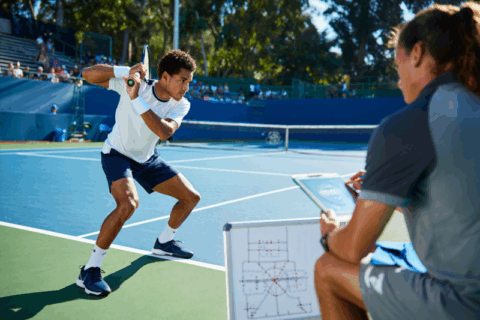
How to Evaluate Young Talents and Future Sports Stars
In the competitive world of sports, identifying and nurturing young talent is essential for building successful teams and staying ahead of the curve. Effective evaluation of junior players and future stars not only accelerates team development but also maximizes return on investment. Whether you’re a scout, coach, or team manager, mastering the art of evaluating emerging talent can be the difference between mediocrity and excellence.
In this comprehensive guide, we explore proven methods, strategies, and tools to assess young athletes accurately. Leverage these insights to make informed decisions that will shape your team’s future success.
Why Is Accurate Talent Evaluation Critical?
Maximizing Team Potential
Developing a team with high-potential players ensures long-term competitiveness and sustainability.
Cost-Effective Recruitment
Proper evaluation prevents costly mistakes in signing or developing players who may not meet expectations.
Building a Competitive Edge
Identifying future stars early gives your team a strategic advantage over rivals.
Core Principles of Effective Talent Evaluation
Holistic Assessment
Relying solely on statistics or visible skills is insufficient. Instead, adopt a comprehensive approach that considers:
- Technical ability
- Physical attributes
- Mental toughness
- Work ethic
- Potential for growth
Data-Driven Decision Making
Utilize advanced analytics and performance metrics to supplement subjective assessments and reduce biases.
Continuous Monitoring
Talent evaluation is an ongoing process, enabling timely adjustments and long-term planning.
Methods to Evaluate Emerging Talent
1. Performance Analytics and Metrics
Use Quantitative Data to Gauge Potential:
| Metric | Purpose | Example |
| Speed and Agility Tests | Physical capability | 40-yard dash times |
| Technical Skills Scores | Ball control, shooting, passing | Drill-based evaluation |
| Game Statistics | In-game performance | Goals, assists, tackles |
| Training Progress Records | Improvement over time | Consistency in data |
Best Practices:
- Implement standardized testing procedures.
- Compare data across players for objective insights.
- Identify patterns indicating growth potential.
2. Video Analysis and Skill Tracking
Leverage Technology to Capture and Review Player Performance:
- Use high-definition recordings of matches.
- Analyze decision-making, positioning, and technical execution.
- Employ software tools for detailed skill breakdowns.
Advantages:
- Visual confirmation of skills.
- Ability to identify subtle traits indicating future potential.
3. Psychological and Mental Toughness Tests
Assess Psychological Attributes:
- Confidence and resilience.
- Focus and concentration.
- Ability to perform under pressure.
Tools and Techniques:
- Interview-based assessments.
- Standard psychological questionnaires.
- Simulated game scenarios.
4. Scout Reports and Observation
Traditional but Still Valuable:
- Live scouting during matches.
- Note player’s work ethic, attitude, and coachability.
- Record decision-making, leadership, and team spirit.
Tip: Balance subjective insights with data for a well-rounded evaluation.
Identifying Future Stars: Key Indicators
Physical Attributes
- Versatility and athleticism.
- Explosive speed and agility.
- Consistent growth in physical development.
Technical Skills
- High ball control.
- Precise passing and shooting.
- Tactical understanding beyond age level.
Mental Attributes
- Competitive mindset.
- Ability to handle constructive criticism.
- Willingness to learn and adapt.
Attitudinal Factors
- Work ethic.
- Discipline and professionalism.
- Resilience after setbacks.
Incorporating Modern Technologies in Talent Evaluation
Artificial Intelligence (AI) and Machine Learning
- Analyze vast amounts of data to uncover hidden talents.
- Predict potential career trajectories based on historical data.
Wearable Devices and IoT
- Monitor real-time physical and physiological data during training.
- Track improvement and alert for overtraining or injuries.
Video Analysis Platforms
- Use automated systems for detailed skill assessments.
- Facilitate remote scouting efforts.
Making the Right Decisions: From Evaluation to Action
Creating a Player Development Roadmap
- Identify strengths and areas for improvement.
- Set personalized training goals.
Balancing Short-term Results with Long-term Potential
- Prioritize prospects with high ceiling potential.
- Avoid over-reliance on immediate performance metrics.
Collaborate with Experts
- Train staff in talent evaluation techniques.
- Consult sports psychologists and data analysts.
FAQs: Common Questions About Evaluating Young Athletes
How early can I reliably assess a player’s potential?
While initial assessments can be made around age 12, the most accurate evaluation occurs when players enter their late teens, as physical and mental attributes become more defined.
What are the biggest mistakes to avoid?
- Overemphasizing raw physical attributes without considering technical and mental skills.
- Relying solely on subjective opinions.
- Ignoring long-term potential in favor of immediate performance.
How can technology improve talent evaluation?
Technology offers objective data, detailed skill analysis, and predictive insights, reducing biases and enabling more accurate identification of future stars.
Final Thoughts
Evaluating young talents effectively is an art grounded in science. By combining performance metrics, video analysis, psychological assessments, and modern technological tools, sports professionals can make informed, strategic decisions that forge the path toward sustained success. Developing a structured, holistic evaluation process ensures that your team invests in players with the highest potential for future stardom.
Take action today: Start integrating these methodologies to discover the stars of tomorrow—today.
*Enhance your talent scouting approach, foster athlete development, and craft winning teams with expert evaluation strategies that deliver tangible results.*


